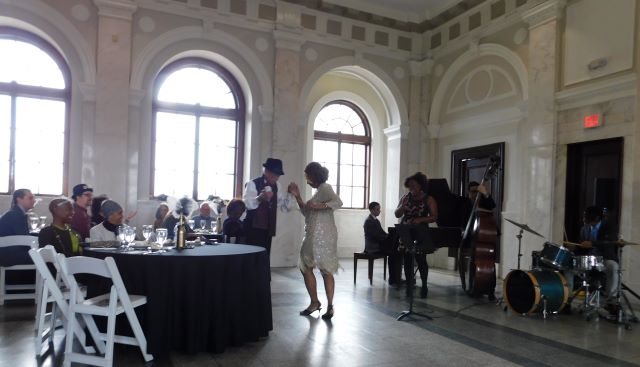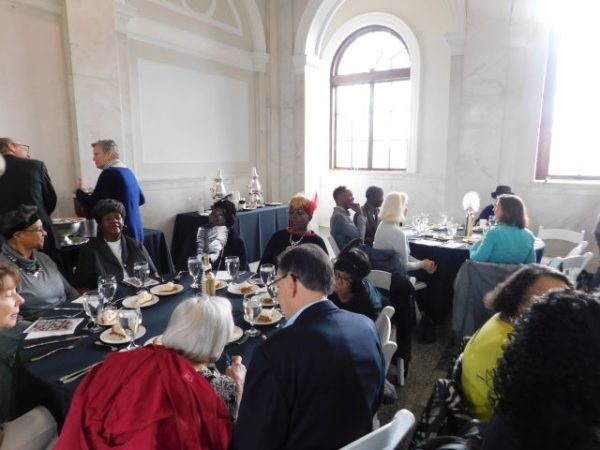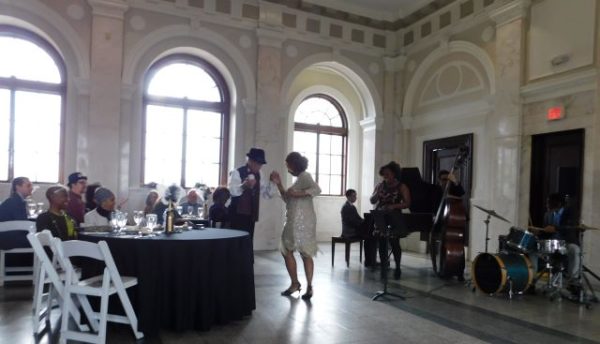“The Jazz Age in the South” highlights African American history – The Champion Newspaper | 404-373-7779

DeKalb History Center commemorates 100-year anniversary of the “Roaring ’20s”
It’s been 100 years since the “Roaring ’20s” and to commemorate that notable decade, DeKalb History Center hosted a celebration Feb. 13 that gave an African American perspective on the period in which jazz music became a staple to Americans and the world.
Jazz is often considered to be improvisational and rhythmic, with a forward momentum called “swing,” and uses “bent” or “blue” notes, as described by the National Museum of American History. Jazz is also known to express varying emotions, from pain to joy.
Dwight Andrews, a music professor at Emory University, said jazz was originally perceived as “the devil’s music” derived from stereotypes that Black people are evil. The music also had associations with illegal activities such as drug use, alcohol consumption and prostitution; it was often played in African American parlors where jazz artists could entertain “guests” in those areas. The 81 Theater on Decatur Street was popular for jazz artists in the Atlanta area.

“From my perspective, the irony of jazz is that it’s really a story in black and white. The first people who were thought to be jazz musicians were the New Orleans River Kings and the Original Dixieland Jazz Band. Ironically, two White groups recorded the first jazz records and they were known throughout the world as originators of jazz … There’s a process in America of what I call racial erasure where African Americans create something, it becomes important, and then their contribution is literally erased.”
Andrews added that Buddy Bolden and other New Orleans musicians are known to be the pioneers of Jazz.
The Harlem Renaissance—an era in which African American arts and culture began to boom in Harlem, New York—was also birthed during the 1920s. Many of the new northerners had migrated from the South during what was known as “The Great Migration,” a time in which millions of African Americans left the South to escape racial violence and seek better economic opportunities.
“The majority of the folks who were in the Harlem Renaissance have roots in the South,” said La’Neice Littleton, an historian and graduate of Clark Atlanta University. “Just as arts, music and poetry were flourishing in Harlem, it was also flourishing in the South in cities like Atlanta—particularly in the area of Auburn Avenue where there were several dozen African American owned businesses and churches. We were really thriving as a community on Auburn Avenue.”

Littleton said the 1920s were also seen as a age of education among African Americans spiking in the Atlanta area by way of the Atlanta University Center. During that time the center consisted of Atlanta University—the nation’s oldest graduate institution for African—Clark, Morehouse, Spelman and Morris Brown colleges. Atlanta University and Clark College consolidated in the 1980s to become what is now called Clark Atlanta University.
“What we saw was an intellectual revolution that was also taking place in Atlanta in the context of the Atlanta University Center,” said Littleton.
Historian Velma Fann also gave the room, crowded with attendees, a recap of some of the highlights of the 1920s which was the period following World War I, a booming economy, and the age of the “New Negro.”
Georgia State University’s award-winning Jazz Band performed throughout the event, which was held at the historic DeKalb Courthouse, which houses DeKalb History Center.
The center is located at 101 East Court Square in Decatur and is open Monday through Friday from 10 a.m. to 4 p.m., and Saturdays from 10 a.m. to 2 p.m. The museum inside the center is free and showcases rotating exhibits.
![]()



